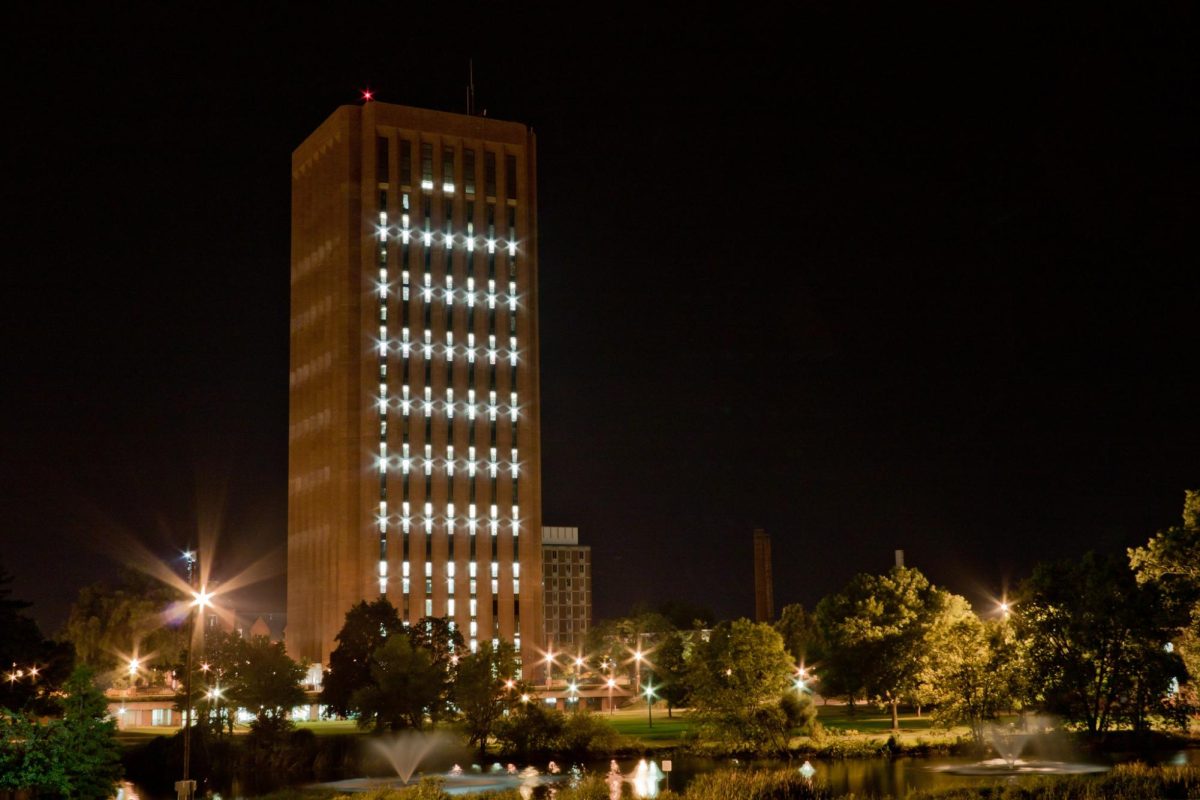Chairs are lined up and people are scattered, waiting their turn in the basement hallway of the Campus Center at the University of Massachusetts. Inside one of the conference rooms, seven medical beds are arranged in a rectangle, each occupied by a person with blood flowing from the needle injected in their arm to the bag placed below them. The American Red Cross is at UMass and blood donations are in progress.
A bag of blood, equivalent to one pint, can save three people, according to medical director of the American Red Cross Massachusetts division, Dr. Jorge Rios. Because science has found no artificial blood source, people depend on donated blood for transfusions, the process by which blood is transported from one body to another. Blood transfusions are most commonly performed for people in traumatic car accidents, undergoing surgery, and chemotherapy patients, according to Rios.
Hospitals have blood banks, where donated blood is stored according to blood type. Three components, red cells, platelets, and plasma, are extracted from one bag of blood and are stored in the blood banks. The highest demand is for red cells, stored between 34-43 degrees Fahrenheit for up to 42 days, which are usually transfused at the same time as plasma, stored frozen at zero degrees Fahrenheit for up to one year. Platelets have the shortest lifeline stored at room temperature for up to five days. After the blood has passed its usable time, the blood is thrown out because, “like milk in the refrigerator, sometimes it gets stale,” said Rios.
Approximately one-third of blood donations come from students, according to Red Cross registered nurse Ann Duncan. Prior to a blood donation, a screening process takes place, where donors are asked a series of questions about travel, weight and history of illness.
Marta Maietta, a junior, has been giving blood every 56 days since she was 17, she said. Twice she has been unable to donate because of her blood’s low level of hemoglobin, the oxygen-carrying component of red blood cells.
“My mom and sister are anemic and my iron usually runs a little low, but by taking iron the night before and day of, I usually manage to stay above 12.5,” she said.
People below a 12.5 reading of hemoglobin, commonly called iron, are not permitted to donate blood because the Red Cross seeks to avoid causing patients to become anemic.
To test hemoglobin levels, donors are given a finger prick during the screening session, said Rios. Once the blood sample is collected, it is put into a small machine called the HemoCue. In about a minute, the HemoCue delivers the hemoglobin levels.
Another instance where one couldn’t give blood is if the donor weighs less than 110 pounds, or if they do not meet a certain weight criteria when they are 18 or younger, said Rios.
Sophomore Elaine Borenstein, 19, was not able to donate at the April 12th blood drive because she was 18 and did not meet specific weight requirements, she said. Each time a person donates, 15 percent of their blood is taken from them, and with a person under a certain weight, the blood donation runs the risk of taking too much blood from that person, said Rios.
Aides take blood pressure readings during screenings to determine if there is enough “energy from the heart” to accompany the blood flow, said Rios. With a normal blood pressure, donating takes between four and 14 minutes, whether it’s someone’s first or tenth time. After giving the blood, the donor goes to the recuperation table to hydrate and eat something to keep them from feeling faint. About six to eight weeks later, the donor’s body will have replaced all of the blood donated, said Rios.
Symptoms from giving blood vary person to person.
Junior Nathalie Fadel fainted after her first time donating, but every time since has been a “positive experience,” she said.
Dan Burke, a junior, received a seven-inch bruise when he was donating his freshman year of college, after the blood stopped flowing in his arm and the needle had to be adjusted, he said. Sergeant Dave Black of the UMPD donates blood four to five times per year, and said has been doing so since high school.
45 percent of the United States population has the universal donor blood type O, according to Rios. In case of emergencies, type O blood is given to patients until their specific blood type can be determined. In many cases, two blood bags are needed to replace the blood a patient has lost. A typical transfusion is ordered by a doctor and administered by a nurse, with the procedure lasting from two to four hours, said Rios.
The Red Cross does not have an upper age limit on giving blood. A donor must be 17 years old without parental consent to give blood, and may donate at 16 years old with parental consent. “Blood is always needed,” Rios said. “You never know what disaster may happen next.”
Caroline Bagby can be reached at [email protected].












